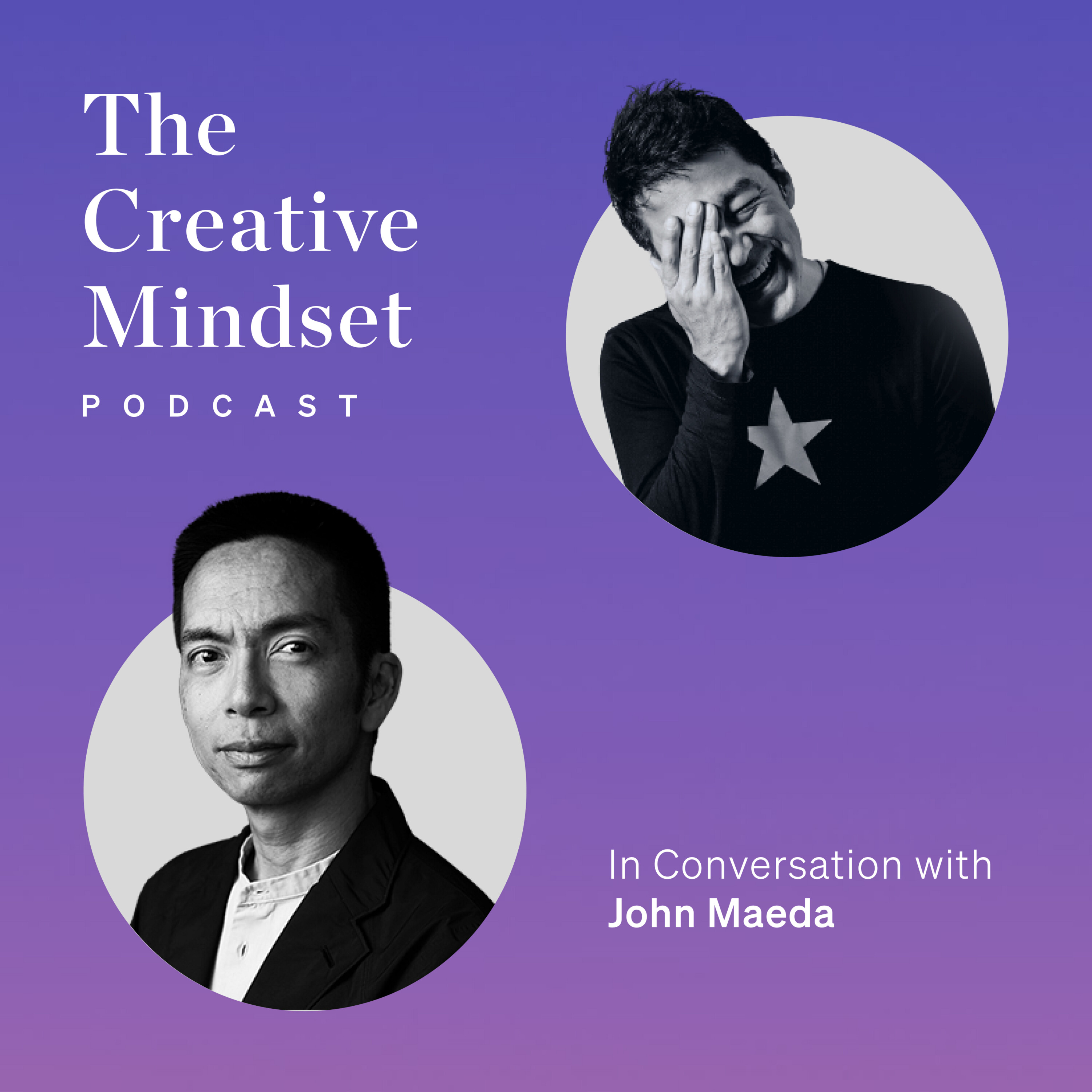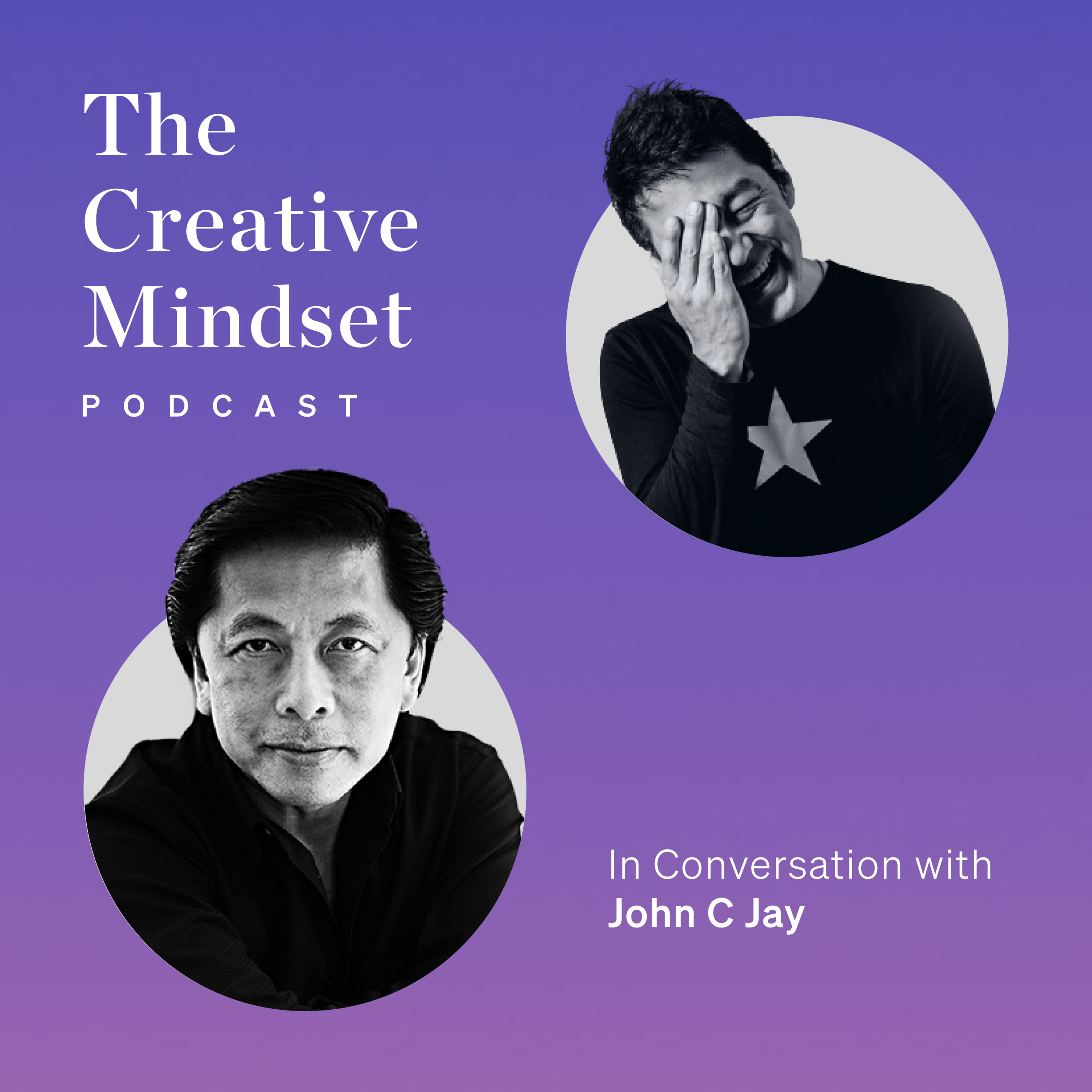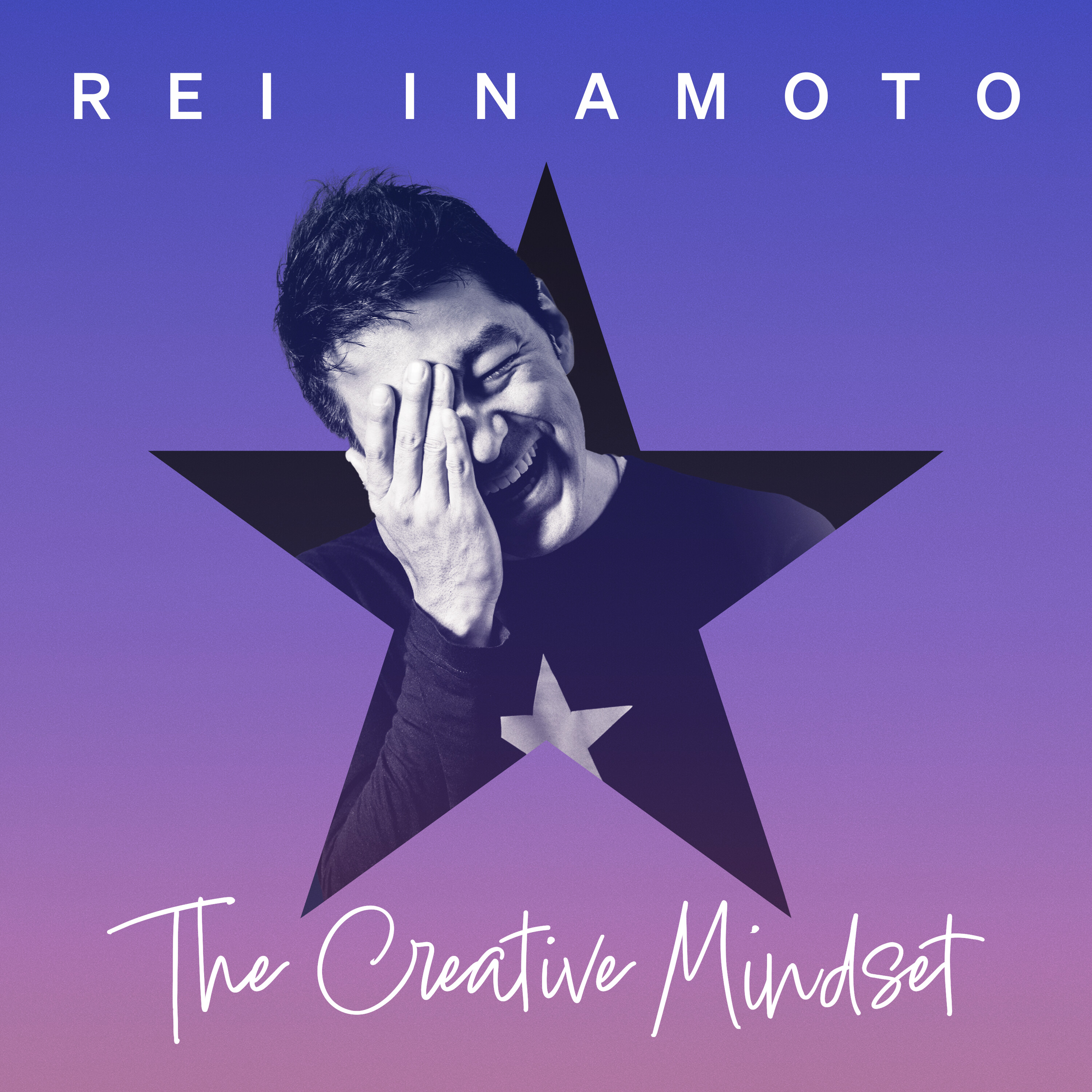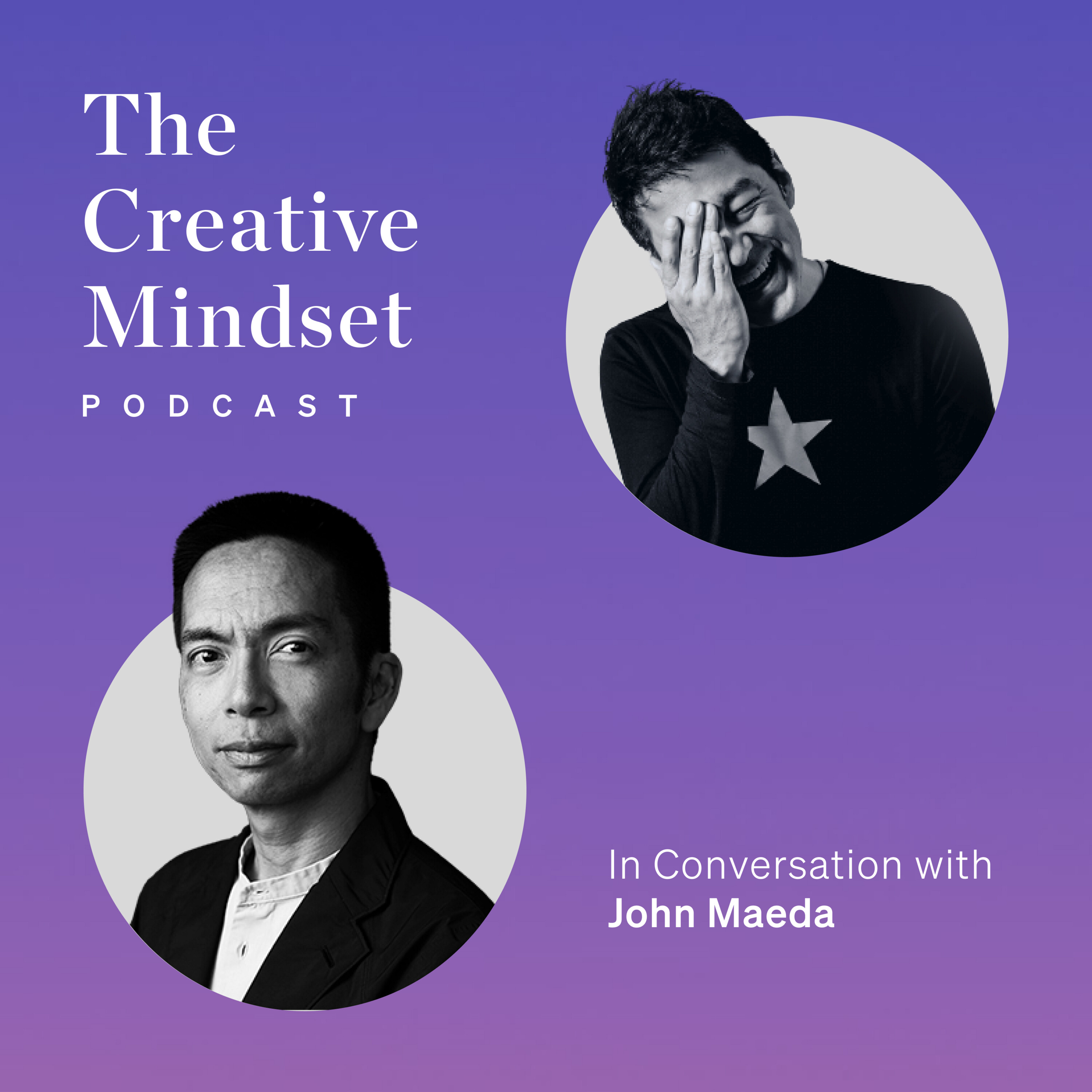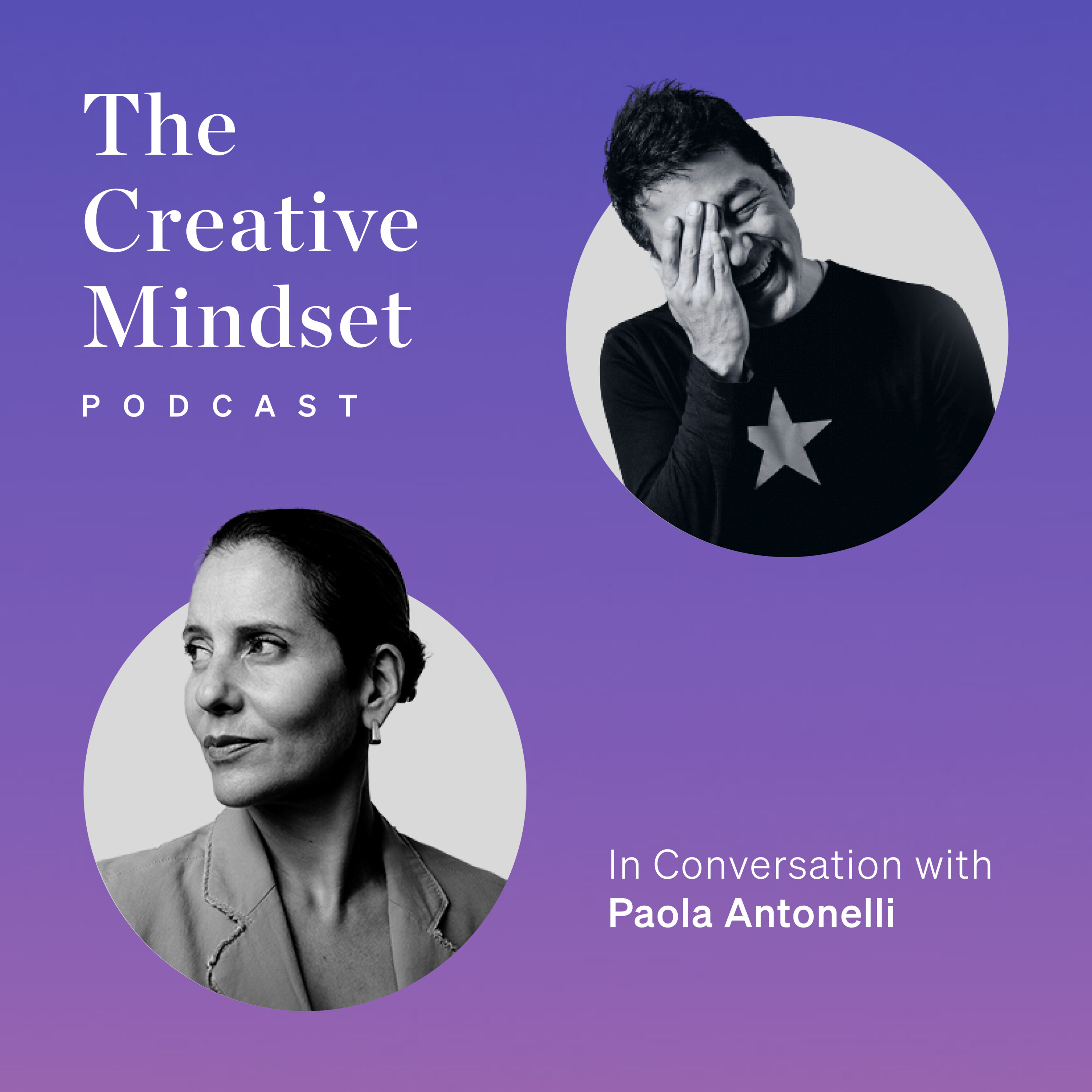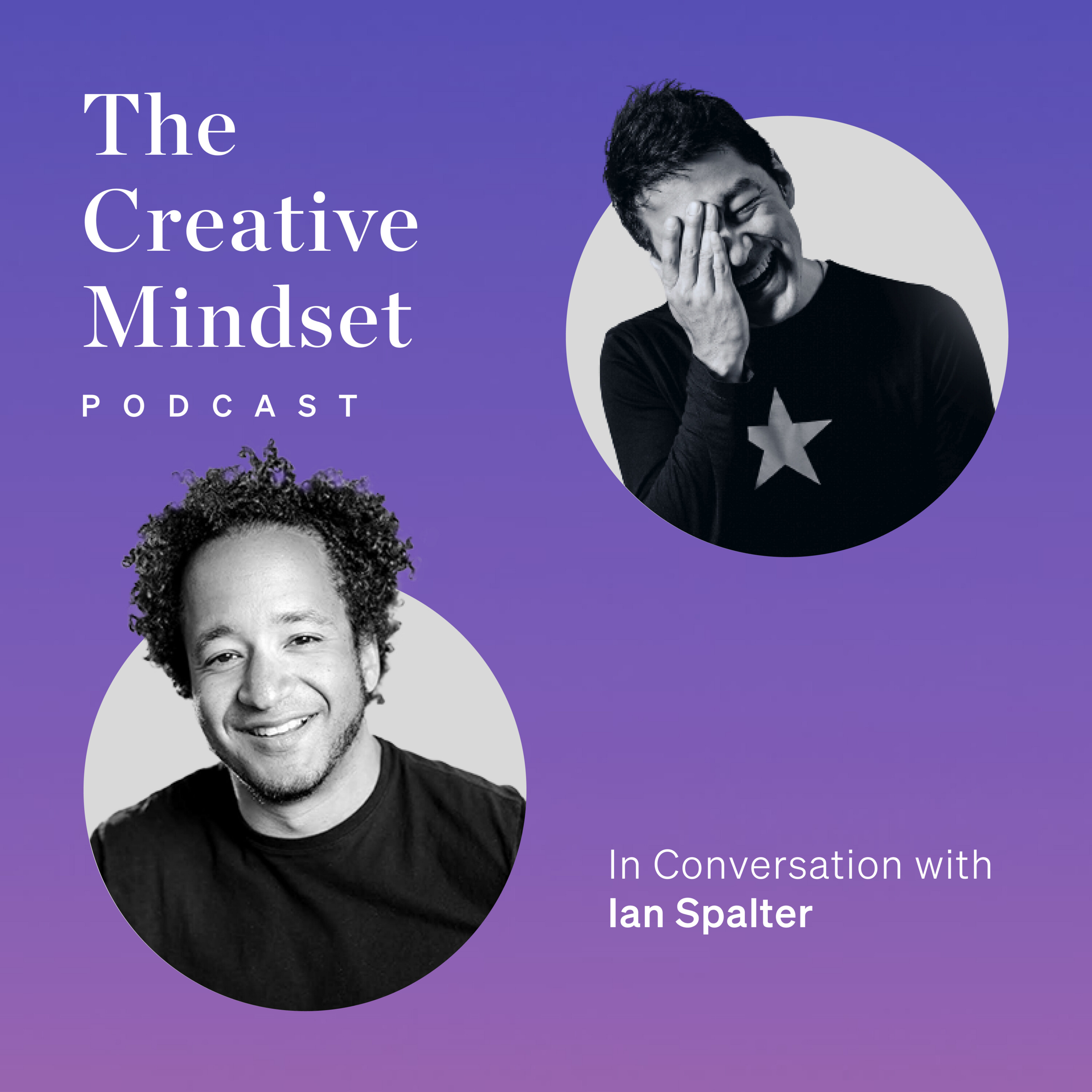What does it mean to be creative, and is creativity a privilege reserved for the wealthy?
On this episode, we welcome back Dr. John Maeda, former professor at the Massachusetts Institute of Technology and current VP of Design and Artificial Intelligence at Microsoft, to hear his definition of creativity and his candid thoughts on what it takes to be creative. He also reflects on personal experiences as an Asian American, his childhood idol, Tora-san, and the importance of resilience in building your career.
Timestamps:
- Intro
- Is creativity nature or nurture?
- Creativity is a privilege
- Advice from a legendary graphic designer: Money gives you the liberty to choose what to do and what not to do
- Asian American heritage and personal experiences
- Crossing boundaries to bring people together
- An actor of integrity
- Learnings crossing over from academia to business
- Three takeaways
https://www.instagram.com/reiinamoto/
https://twitter.com/reiinamoto
See Privacy Policy at https://art19.com/privacy and California Privacy Notice at https://art19.com/privacy#do-not-sell-my-info.
00:03
This is ReinaMoto's Podcast, The Creative Mindset.
Hi everyone, this is ReinaMoto, the founding partner of I&CO,
a global innovation firm based in New York and Tokyo.
Welcome to The Creative Mindset, a podcast about the art of building a career through
conversations with the world's leading practitioners of creativity.
It's an intimate journey on how they got started,
their turning points, failures, and tips on work and life.
Today's episode is part two of my conversation with Dr. John Maeda,
the design and technology expert that if you don't know who he is,
well, you should definitely learn.
In this part of my conversation with John,
he goes into the definition of creativity and how he views creativity,
as well as some of the life influences that he had,
and the fact that he failed and what he did with it.
So let's get started.
The theme of the loose, large theme of this conversation, I want to focus on creativity,
but creativity itself is a pretty loosely defined and vague word.
Is creativity talent or something that can be taught?
You know, is it nature or nurture?
Well, I think that if you are a bachelor engineer with no friends,
it is much better to do engineering,
because engineering is the most peaceful place that nobody bothers you, blah, blah, blah.
So the reality is that being creative sounds very challenging and exciting,
and also frightening and scary, and I might fail.
And nobody wants to fail because they look bad.
In Japan, if you look bad, everybody makes fun of you.
It's terrible.
But if you're lucky to have parents that you don't hate and you maybe like them,
that's emotional and interesting.
Like, what do they like?
What do they don't like?
What do they don't like?
And maybe if you have friends that are not like you, you realize,
oh, they have different interests.
Why do they like that?
I don't like that.
If you feel I don't like that, it means you're getting more creative.
So if you have a kind of whatever, it's a sign that you're growing.
So every engineer wants to become more powerful, a better engineer.
The greatest engineers all understand art.
How do you teach creativity?
I think the first thing I have realized, however, about creativity is that
you have to be wealthy.
03:02
It sounds horrible, but you have to have some level of privilege.
Everyone doesn't get to be creative in society.
If you have a roof over your head, if you have food, then you get to be creative.
But if you don't, you have to make money to eat.
So that's the first thing that I always emphasize that
creativity is a privilege you get to have.
Interesting.
So you have to earn a living or make money to have that privilege.
Yes.
I have to rethink my point of view about money.
And I tend to say, of course, you know, you have to make a living,
but don't focus on money, making money.
That's been my philosophy.
And also, as you know, the money you've made, you've invested in things that you like to do.
Look broadly.
Actually, Paul Rand said this to me.
Young man, I have something very important to tell you.
Make lots of money.
And I'm like, oh, that doesn't sound like good advice to this, you know,
wakamono or whatever.
And he says, you don't understand.
He said, you found my book in the library, whatever.
Paul Rand, A Designer's Art.
Yeah, I love that book.
It changed my life.
Well, you know how it was printed, right?
I said, oh yeah, it's like five color.
It's four color with a spot color silver.
Oh, it's beautiful.
He said, you know, Yale University Press wouldn't pay for four color or the spot color.
I paid for that.
And he said, don't forget that in life, you will do things that make a lot of money that
you don't want to do.
To pay for the things that make no money that you want to do.
So, I thought this was the most useful advice for creative people that I'd ever heard of.
And I used it in my life.
The second thing is that creativity requires exposure to many things.
Because as you know, diversity creates more of a view.
So, when I think about how remote work is wonderful, but it's reduced the diversity
of what you actually can see and smell.
So, getting out is so important.
Because Matthew Carter, the famous typographer, the famous famous Matthew Carter would always
say, every city he goes to, he visits the what he called the tombstones, where all the
dead people are, to study the typography.
And I'm thinking like he's like a master of typography, but he's always trying to learn
and he wants to learn from a more diverse base.
Can you tell us a little bit about, you know, your heritage and how it may work against
you or work for you?
06:02
I began, I went on a journey and I discovered all kinds of things.
For instance, there's a meme where, you know, it's often common that people ask me like,
what country are you from?
Even though I speak fluent American English.
Even though I speak fluent American English.
And I'll say from Seattle.
And then they'll say, no, no, no.
Like, where are you really from?
Very common question.
But actually the statistics will say that the majority of immigrants are from Asia.
And the chance that someone will talk to someone with a accented English is actually from
a mathematical sense, it's very high.
And the movies propagate this stereotype as well.
So, for me nowadays, like that doesn't bother me as much.
I didn't really think about how undiverse the world was for most of my career.
Because I don't, I have less sensors on me and think too much about it.
It wasn't until I got to Silicon Valley that I began to think about it.
You know, I was like, oh, did that happen because I don't look white?
You know, I just never even thought about it.
And working with more women, working with more African Americans, working with more poor
white Americans too, I began realizing, wow, we have all this bias.
And how lucky I am because I'm an Asian American male.
So, because Asian Americans or Asians on film in the West have been desexualized.
So, I can hang out with women all the time.
It's okay.
You know?
And then because I'm a designer, I fit in with the LGBTQ sort of world where that's
like divergence is okay.
Wearing a shirt with this is okay.
So, there's inclusiveness in that world as well.
I can hang out with African American people too because maybe I'm not a bad minority or
whatever.
I don't know.
Let's try it out.
Or I can hang out with white Americans because, you know, maybe that's okay.
But in the process, I have learned how much of a privileged position I have and how can
I bridge more communities like that.
So, I've really taken that to heart after my time in Silicon Valley where I kept being
introduced to the top designers.
And the top designers were always pale male designers.
And I thought, oh, this is very strange.
There's women.
Why aren't there any top women designers here?
Or why aren't there top people of color designers?
And it's very rare.
So, what does bother me is when people are excluded of all kinds.
Do you remember?
We were at a dinner one time and I think we would like change spots and me and Nate were
in spots.
And then someone said, oh, you're replacing the other Asian.
09:00
And I was really upset that day.
You'll remember.
I was upset because just the day before, there was an Asian guy dragged in the airplane.
So, I was very upset that day.
And then I began analyzing their reaction and I realized, oh, so I look Asian.
I'm mad about Asian things.
So, they've now put me in this bin of, you know, he's an Asian person and angry about
these things.
So, this was when you and I were invited to a dinner near MIT.
And there were, I think, 15 to 20 people.
So, around the table, mostly white male.
There was some white female and very few people of color.
And this is interesting, especially for the audience, because before you came, I was sat
next to Joy Ito.
Yeah.
And then, you know what, I can't remember exactly which way it happened, but Joy had
to leave and then you came later.
And then you were sat, either you sat next to me or you were sat next to me because,
you know, I was an Asian guy and next to me was Joy.
He had left.
And then you replaced him, I guess.
And whoever this non-Japanese, non-Asian person made that, you know, somewhat naive
observation, but kind of an inappropriate observation.
Oh, he just said, we just replaced Asians.
Ha ha ha.
And I remember I got mad.
I got mad.
I was like, what are you talking about?
I remember the host was very afraid, like, oh, what is happening?
And your eyebrows went up too.
Like, whoa, what's happening?
I had forgotten about that episode though.
Thanks.
Yeah.
You know what, I think those things do happen.
Yeah.
And so, I realized, I don't know if I want to do all my, I don't know if I want to spend
my whole life being that person.
I think my function is to help bridge different types of people.
Our jobs though, as people who cross boundaries, is to bring people together.
When I was at Klan of Perkins, they were very open to my changing how all the events ran.
So, it was always 50% men, 50% women.
It was oftentimes 30%, sometimes 40% people of color.
And the neat thing is that every time I had events, everyone said they were the best events
because the group was interesting.
So, that was a moment where I thought it was important.
So, instead of talking about the rest of your career, which you've had an amazing career
and you're still trying new things, doing new things.
Looking back, what were turning points?
One of my big influences is Tora-san.
12:01
I love Tora-san.
Atsumi Kiyoshi Tora-san.
I was very inspired by him.
He didn't give very many interviews.
And he explained why he didn't give interviews.
He said because, you know, every year everyone needs Tora-san to feel good for that year.
And so, he didn't want anyone to see the real person.
Otherwise, they would lose that image.
So, I think Tora-san is an interesting character in Japanese modern entertainment who had integrity.
And so, I remember hearing this story and being so moved by it
because I think that that's the kind of person that we all aspire to be.
Someone with integrity.
But it's hard.
He said it was like something about...
It's like finding out that Superman has a harigane.
And to learn that destroys the Superman myth.
So, I think it's a hard world to be made visible.
And I thought that Atsumi Kiyoshi kind of showed me that, you know,
it's part of the job to be out there and visible.
So, it means you have to be strong.
Interesting.
If you had to pick one piece of work in your career,
what would it be that you would say this is the piece of work that I'm most proud of?
Oh, well, that's funny because, you know, I really like what I'm doing right now.
Because I don't think of what I did in the past because, you know, that old saying,
you're only as good as your most recent show.
I think it is so true.
So, I'm really happy when people remember my old work and like,
oh, I loved your work, but I don't remember it very well.
I know I'm being judged about what I do right now.
So, I love working in the resilience crisis space.
The earth, the climate, I barely understand some of the complications which excites me
and I'm trying to like untangle them.
So, I love the work I'm doing on resilience right now.
It's not done.
Yeah, well, I work as the chief technology officer of Everbridge.
And our charter is to help keep people safe and let organizations run faster
using just technology for communication and collaboration.
And it's a very meaningful thing to do, especially during this time of all these
bad things that happen, wildfires, floods, riots, all these kinds of things.
It's a very serious kind of stuff.
And I have gotten to learn so much about how the world really works.
And I invite anyone who wants to work in the safety technology space to be excited
15:00
because unfortunately, the world is going to continue to be less safe.
Excellent.
Excellent.
I definitely look forward to your leadership and contribution in that space,
which is very different from what you used to do in your early part of a career
and in your academia career.
So, we respect you making those changes and evolving your career
to do what you do.
What did you find when you went from academia to that business world and investment world
and being known as a designer slash technologist coming from academia and going into business?
What did you learn about their view of creativity in the context of design?
Well, I learned the same thing I learned when I went from engineering to design.
I was kind of different and I would never be good at whatever.
So, when I went there, I would never be good at the investor world.
So, there's always a push when you're joining a new club.
And so, a combination of coming from the academic world, coming from the creative making world,
it was hard the way it should be.
So, I had to learn everything about startups, about end ups, about every type of round that's
raised, every type of advisory you can bring in, every type of way the board is built or not.
And I guess I just, again, got lucky.
I think I have been unusually lucky.
I worked hard.
And when you work hard, that's how luck comes to you, right?
You know, Sonos, the company was just getting going and the CEO of Sonos invited me to his
board and I said, why do you want me?
He said, because you think differently.
So, these kinds of wonderful opportunities, I think of it like I've known many momotaros
and I've been like the dog or the monkey.
Who gets to go along the adventure?
So, I guess that kind of luck taught me how to become a better board member, a better
investor.
You know, it's that luck of being able to fail publicly and recover quickly is something
that I think that I have been living.
And I tell people, people say to me, oh wow, how did you do that?
How did you do that?
Well, I tell people like one day I will try something and I will not be able to get up.
Then I will know, you know, it's time to stop.
18:02
So, it's like listening to Toda-san again.
I mean, he had a last movie.
Eventually, he had a last movie.
And so, I realized, oh, you know, it's got that's going to be coming.
So, until then, I'll make a new movie every season.
That's great.
That's great.
That was part two of my conversation with John Maeda.
The three key takeaways that I had from this conversation were, number one, creativity
is a privilege for the wealthy.
Number two, never lose sight of integrity.
And number three, it's okay to fail.
You just have to get up.
Key takeaway number one, creativity is a privilege for the wealthy.
When I heard this, I have to say I was really, really shocked.
I think on one level, I wanted to say that creativity is for anybody regardless of their
backgrounds, including their wealth.
But John was the first person who has told me that creativity is a privilege for the
wealthy.
You have to have the resources.
You have to have some money to be able to study art, I mean, to go to a university,
to a fairly established university, you know, education and colleges and universities.
You do need to have those means to get to that point.
And I think it's one of those things that people might think, but they're not willing
to say.
But John was willing to say it even if he might get some kind of disagreement.
I mean, he even said that, you know, this is horrible to say, but you have to be rich
to be creative.
And again, what he meant by creative in this context was to be able to pursue creativity
as part of your career.
The key takeaway number two, never lose sight of integrity.
He brought up his childhood idol, Tora-san.
Tora-san literally translated is Mr. Tiger.
And it's a Japanese film series between 1969 and 1995.
And apparently, there were 48 films created in those years.
Tora-san, this main character, is a traveling salesperson.
And he goes from town to town selling different things.
But every once in a while, he suddenly returns home to spend some time with family.
21:05
And in each episode or each film, he shows up to his home, to his family.
He gets into an argument, and then he storms off from the family to go to his destination.
48 films, the same character, same family, same plot.
And you kind of enjoy these different situations with the same storyline.
But one thing that John pointed out was the fact that Tora-san was a man of integrity.
No matter what he did, he always kept his integrity.
And that must have made an impression on the young version of John.
So key takeaway number two, never lose sight of integrity.
And the final point is it's okay to fail.
You just have to get up.
He was at MIT earlier in his career.
And when I first met him, he then later became the dean of Rhode Island School of Design.
And that was in the academic world, as well as in the design world,
when he switched from MIT to RISD, Rhode Island School of Design,
was big news, and I do remember that moment.
And there was a lot of expectations for John.
But only after a couple of years, he was forced to leave RISD
because the kind of changes that he was trying to make
and all the institutions were not necessarily welcome.
And he must have felt not great, you know,
obviously being kicked out of an established institution like RISD.
But, you know, he found himself, he got up and he found new path.
When I spoke to John, when I recorded this session with him a few months ago,
he was at a company called Everbridge.
He was the chief technology officer at Everbridge.
But, you know, that was his position on the East Coast.
He was living in Boston.
He mentioned later on to me that his parents were getting old,
that he needed to spend more time with them.
So it sounds like he relocated himself and his family, I would imagine,
from the East Coast to the West Coast.
And now he is at Microsoft as the VP of Design
and Artificial Intelligence at Microsoft.
So I'm really looking forward to what he would cook up at Microsoft
and the kind of influence that he would have
either directly or indirectly on the design industry,
24:02
as some people call him, the Yoda of the design industry.
The three key takeaways from part two of my conversation with John Minor,
number one, creativity is a privilege for the wealthy.
Number two, never lose sight of integrity.
And number three, it's okay to fail.
You just have to get up.
I had met John, like I said, 25 years ago.
And the impression and the impact that he had on me was just unbelievable.
And I was so appreciative back then, the fact that he took the time.
But equally, I'm appreciative of the fact that I'm still connected to him.
And even though I don't get to talk to John that often,
every time I walk away with something that is super meaningful.
This conversation was even more meaningful in multiple takeaways that I had.
And I hope some of these takeaways will stay with you.
The next conversation will be with John Jay, the creative chairman of Fast Retailing,
which is a parent company for the world-famous fashion brand, Uniqlo.
John Jay himself is a legend,
and he's somebody that I've looked up to for many, many years.
So stay tuned.
I am Reina Moro, and this is A Creative Mindset.
See you next time.
25:56
コメント
スクロール
